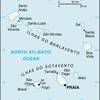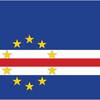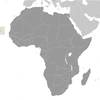Cabo Verde [+]Compare [E]dit [H]istory
Aliases: Republic of Cabo Verde, Republica de Cabo VerdeObject «Cabo Verde» was created due to
Add new object to «Cabo Verde» or move existing objects here.
Object «Cabo Verde» has attributes [Show empty attributes][Hide empty attributes]
| Attribute | Value |
|---|---|
| Geography | |
| Area | 4,033 km² |
| Continent | Africa |
| Land area | 4,033 km² |
| Water area | 0 km² |
| Land boundaries | 0 km |
| Border countries | Add |
| Coastline | 965 km |
| Mean elevation | Add |
| Lowest point | 0 m |
| Highest point | 2,829 m |
| People | |
| Population | 583,255 |
| Official languages |
|
| Religion | Roman Catholic |
| Government | |
| Long country name | Republic of Cabo Verde |
| Short country name | Cabo Verde |
| Long local name | Republica de Cabo Verde |
| Short local name | Cabo Verde |
| Former name | Add |
| Government type | Parliamentary republic |
| Capital | Praia |
| Economy | |
| GDP (PPP) | 3,777,000,000 USD |
| GDP (OER) | 1,776,000,000 USD |
| GDP (real growth rate) | 4 % |
| GDP - per capita (PPP) | 7,000 USD |
| Gross national saving | 32.4 % of GDP |
| Labor force | 196,100 |
| Unemployment rate | 9 % |
| Population below poverty line | 30 % |
| Budget revenues | 493,500,000 USD |
| Budget expenditures | 546,700,000 USD |
| Military expenditures | 0.55 % of GDP |
| Taxes and other revenues | 27.8 % of GDP |
| Budget surplus or deficit | -3 % of GDP |
| Public debt | 125.8 % of GDP |
| Inflation rate | 0.8 % |
| Central bank discount rate | 7.5 % |
| Commercial bank prime lending rate | 9.5 % |
| Stock of narrow money | 774,000,000 USD |
| Stock of broad money | 774,000,000 USD |
| Stock of domestic credit | 1,610,000,000 USD |
| Market value of publicly traded shares | Add |
| Current account balance | -109,000,000 USD |
| Exports | 189,000,000 USD |
| Imports | 836,100,000 USD |
| Reserves of foreign exchange and gold | 617,400,000 USD |
| External debt | 1,713,000,000 USD |
| National currency | Cabo Verdean escudos |
| National currency (code) | CVE |
| National currency (symbol) | $ |
| National currency rate to USD | 101.8 |
The uninhabited islands were discovered and colonized by the Portuguese in the 15th century; Cabo Verde subsequently became a trading center for African slaves and later an important coaling and resupply stop for whaling and transatlantic shipping. The fusing of European and various African cultural traditions is reflected in Cabo Verde’s Krioulo language, music, and pano textiles. Following independence in 1975, and a tentative interest in unification with Guinea-Bissau, a one-party system was established and maintained until multi-party elections were held in 1990. Cabo Verde continues to sustain one of Africa's most stable democratic governments and one of its most stable economies, maintaining a currency formerly pegged to the Portuguese escudo and then the euro since 1998. Repeated droughts during the second half of the 20th century caused significant hardship and prompted heavy emigration. As a result, Cabo Verde's expatriate population - concentrated in Boston and Western Europe - is greater than its domestic one. Most Cabo Verdeans have both African and Portuguese antecedents. Cabo Verde’s population descends from its first permanent inhabitants in the late 15th-century – a preponderance of West African slaves, a small share of Portuguese colonists, and even fewer Italians, Spaniards, and Portuguese Jews. Among the nine inhabited islands, population distribution is variable. Islands in the east are very dry and are home to the country's growing tourism industry. The more western islands receive more precipitation and support larger populations, but agriculture and livestock grazing have damaged their soil fertility and vegetation. For centuries, the country’s overall population size has fluctuated significantly, as recurring periods of famine and epidemics have caused high death tolls and emigration.
Similar objects
- [⇄] [+] Belize
- [⇄] [+] Croatia
- [⇄] [+] Grenada
- [⇄] [+] Namibia
- [⇄] [+] Saint Vincent and the Grenadines
Most often compared with
- [⇄] [+] Namibia
- [⇄] [+] Saint Vincent and the Grenadines
- [⇄] [+] Belize
- [⇄] [+] Djibouti
- [⇄] [+] Grenada
Everyone can something to edit or add.
There was one edit, no edits waiting approval. Last edited by jmcdermott(9391), Sep 16, 2019 (59 fields were changed)
Help · Contact us · Disclaimer · Contributors · Developers · Donate


